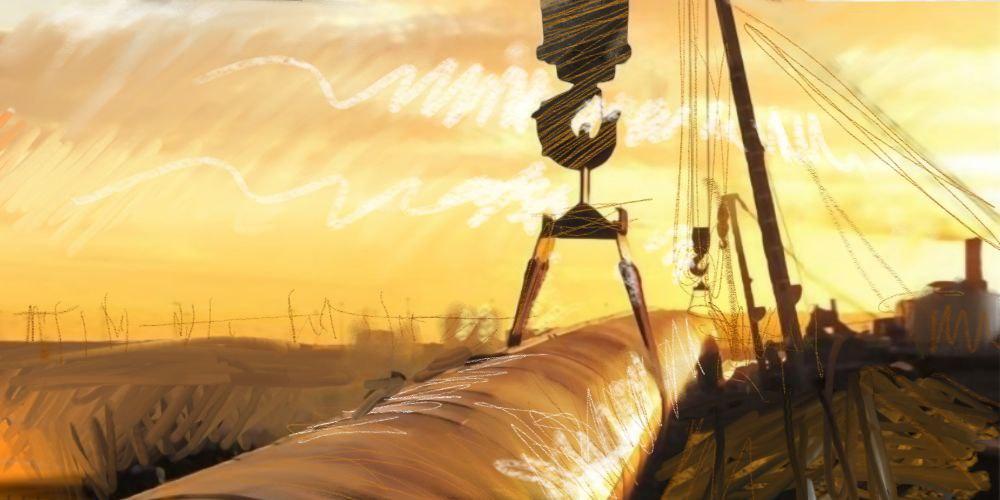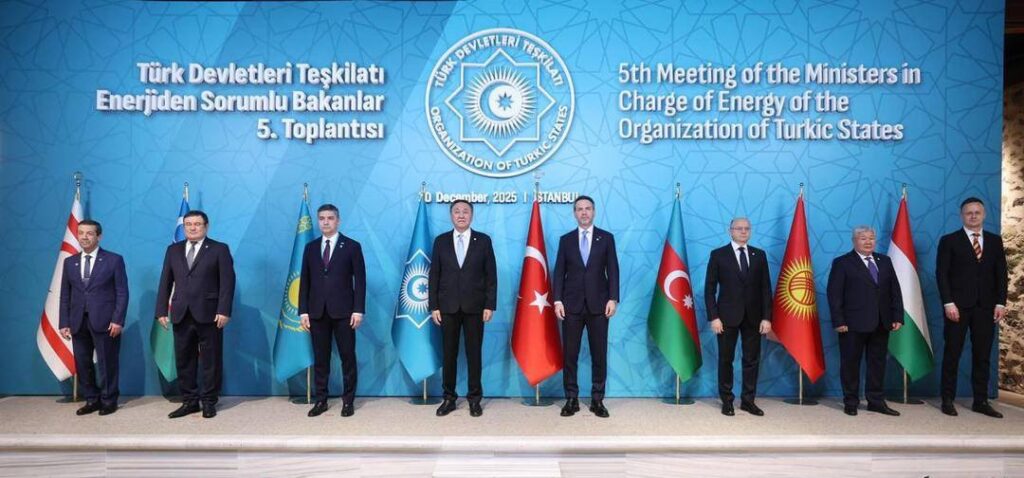Turkmenistan is reconfiguring its natural gas export options. Despite holding the world’s fourth largest gas reserves, Turkmenistan is exporting less of its gas today than it was 16 years ago.
The big gas pipeline projects conceived nearly 30 years ago – a trans-Afghan pipeline to supply gas to Pakistan and India and a trans-Caspian pipeline to send gas to Europe – remain unfeasible for political reasons.
Russia has been a leading customer for Turkmen gas for most of those three decades, but now Russia is competing for some of the same buyers as Turkmenistan.
Stymied in its search for new markets at seemingly every turn, Turkmenistan is now planning on selling gas to Iraq, via a swap arrangement with Iran that includes bring Iranian companies to Turkmenistan to construct a new pipeline.
Running Out of Options
Turkmenistan is always looking for new gas customers. Iraq was never a potential gas buyer until recently, and in fact, the defunct Nabucco gas pipeline project of some 15 years ago considered Iraq to be a possible supplier of gas for Europe.
Turkmenistan’s deal with Iraq appears to be the only deal possible at the moment, and it is an interesting arrangement.
The two countries are not connected by any pipelines, so Turkmenistan will ship up to 10 bcm of gas to Iran, and Iran will send 10 bcm of its gas to Iraq.
Turkmenistan signed what was described as a “binding agreement” for gas shipments after Iraq agreed to “an advance payment scheme and tax concessions.”
In recent years, about 40% of Iraq’s gas imports came from Iran. After some 20 years of conflict, Iraq’s gas industry is still recovering, and gas imports are needed to operate the country’s power plants. However, sanctions on Iran made it difficult for Iraq to make payments for that gas.
A Rocky Gas History
There are already two gas pipelines connecting Turkmenistan’s gas fields to northern Iran.
At the end of December 1997, the 200-kilometer Korpeje-Kurdkui pipeline with a capacity of some 8 bcm of gas was launched. In January 2010, the Dauletabad-Sarakhs-Khangiran pipeline with a capacity of some 12 bcm started operation.
Turkmenistan was never close to shipping the 20 bcm combined capacity. Exports ranged from 6-8 bcm annually for years.
Iran usually paid for its Turkmen gas in barter, sending a variety of goods, from food to engineering goods and services to Turkmenistan.
In late 2016, a dispute developed between Turkmenistan and Iran over gas. Turkmenistan claimed Iran owed some $2 billion for gas supplies received in the winter of 2007-2008. Iran responded that Turkmenistan was inflating the price.
The winter of 2007-2008 was especially cold causing severe gas shortages in 20 Iranian provinces. One Iranian media outlet reported on December 31, 2016, “Turkmenistan pounced on the occasion to demand a nine-fold hike which yanked the price up to $360 from $40 for every 1,000 cubic meters of gas.”
On January 1, 2017, Turkmenistan halted gas supplies to Iran. The two countries took their cases to international arbitration, which was eventually settled in Turkmenistan’s favor in June 2020.
Since 2017, the two countries have cooperated in a swap agreement with Azerbaijan, but that only called for some 1 bcm of gas.
Turkmen and Iranian officials have been in talks on gas, but after nearly eight years, Turkmen exports to Iran have not resumed.
A Rare Contract
To ship 10 bcm of gas from Turkmenistan to Iran requires maintenance and repair on the two largely dormant pipelines connecting the two countries.
Iranian and Turkmen officials met in early July 2024 to sign a contract for the transfer of gas. That agreement called for “Iranian companies [constructing] a new 125-kilometer gas pipeline along with three gas pressure booster stations in Turkmenistan aimed at boosting annual shipments of gas to Iran to 40 bcm.”
The Iranian companies taking part in the project were not identified, but it is an unusual step for Turkmenistan. The only other foreign company to have a contract to build pipelines on Turkmenistan’s territory was the China National Petroleum Corporation for the three gas pipelines to China (Lines A and B – 15 bcm each, and Line C – 25 bcm).
Increasing shipments to Iran to 40 bcm requires construction of a new pipeline with a capacity of 20 bcm of gas, doubling the current combined capacity of the two existing pipelines.
Reports mentioned that increasing Turkmen gas shipments to Iran was a “long term” goal, but provided no timeframe.
Another matter that is unclear is only 10 bcm of that gas is going to Iraq. There was no information about the final destination of the remaining 30 bcm Iran plans to receive.
Not Much Choice
Turkmenistan has been trying to sell gas to anyone who would be interested. Among the countries Turkmen officials named just this year as potential customers are Azerbaijan, Turkey, Afghanistan, Pakistan, India, Kazakhstan, and vaguely, the European Union.
China is currently Turkmenistan’s main gas customer. Turkmenistan exports about 35 bcm to China via three pipelines with a combined capacity of 55 bcm that also run through Uzbekistan and Kazakhstan.
For nearly 20 years after independence in 1991, Russia was Turkmenistan’s main gas purchaser. Turkmen sold some 45 bcm of gas to Russia in 2008, which represents the zenith of Turkmen gas exports.
Russia drastically scaled back imports of Turkmen gas starting in 2009, and in July 2024 the two countries allowed their biggest contract, for 5.5 bcm, to expire after price negotiations failed.
This was not surprising since Russia has become Turkmenistan’s main competitor for regional customers.
After Russia launched its full-scale war on Ukraine, European countries responded by drastically cutting back on imports of Russian gas. Russia turned to Asian markets and signed deals to supply gas to Turkmenistan’s neighbors Kazakhstan and Uzbekistan.
Worse, after several straight winters of power shortages, Kazakhstan and Uzbekistan are reorienting their gas production for domestic use. Each country has the right to pump up to 10 bcm of its own gas into the pipelines that cross through their territories running from Turkmenistan to China.
Since neither country is currently in a position to export its full allotment, Russia has a deal to take the spare capacity and ship its gas to China via the Turkmenistan-China pipelines, despite Turkmenistan having sufficient gas to replace Kazakhstan and Uzbekistan’s share of pipeline space.
Gas exports to Afghanistan remain improbable due to a lack of foreign investors. Turkey and Azerbaijan are enthusiastic about helping transit Turkmen gas to Europe, but the infrastructure still does not exist to accomplish this.
The 40 bcm referred to in reports about the recent Iran-Turkmen agreement could indicate Iran will be purchasing Turkmen gas again in the future, and in larger quantities than previously.
For now, however, the surest deal Turkmenistan is able to find to increase its gas exports is the agreement with Iraq. Whether this swap arrangement involving Iran can deliver the promised 10 bcm remains to be seen.









